
Developer: Purple Lamp Studios
Publisher: THQ Nordic
Platform: PC
Tested on: PC
The Guild 3 – Review
It’s been a whopping sixteen years since The Guild 2 debuted, so it shouldn’t come as a surprise that The Guild fans have eagerly been anticipating the return of the series. The game’s development cycle was rough, with original developer GolemLabs starting on it in 2015 before being pulled by publisher THQ Nordic after three years. The project was subsequentially moved to Purple Lamp Studios in 2018, who are now delivering the finished product, after an extended Early Access period. Now that the full version of The Guild 3 is finally here, the question is whether or not it was worth the wait.
Story
There isn’t a real story present in The Guild 3 except the one that you create for yourself. You simply start out as the patron of an up-and-coming family that starts a simple business that eventually expands into an economic juggernaut. Along the way, you have the option to increase your political standing and run for mayor or even viceroy. We would have liked to have seen an actual narrative campaign implemented here, but we can only lament the lack thereof.
Graphics
Purple Lamp Studios’ development on The Guild 3 took roughly five years and an unfortunate side-effect of being in development hell for this long is that unless the game receives periodical graphical updates, you end up with a title that looks dated from the get-go. This is definitely the case here. The game doesn’t end up looking terrible, but the graphics aren’t mind-blowingly good either. We aren’t expecting a game that is essentially an economic simulation game to blow us away in the same way that a title like The Quarry would, of course. However, if you were to tell us that The Guild 3 was a game from 2012 rather than 2022, purely based on visuals, we’d believe it if we didn’t know any better.
Sound
The Guild 3’s audio fares a little better than the graphics did, with the clamoring of crowds and the hustle and bustle of a medieval city really adding some much-needed life to the lackluster visuals. The music feels like generic fare but it’s suitable enough and doesn’t distract from the gameplay, which is what the main focus is on.
Gameplay
If you’ve never played a previous The Guild game (which we hadn’t) then it can be quite difficult to wrap your head around what the series is like in terms of gameplay, simply because there isn’t anything else like it out there. From the screenshots, it’s easy to assume you’re looking at The Sims but set in medieval times, but in reality, this is actually a game about politics and economics. The game revolves around making money, building up prestige, and climbing the socio-economic ladder. If you’re anything like us, then a game about economics sounds boring, as you’re essentially looking at glorified Excel sheets, but The Guild 3 tries to make things more appealing through gamification and world-building.
This is immediately noticeable when the game asks you to create a character, who will serve as the pater familias of your budding economic dynasty. Character creation starts out feeling very much like a traditional RPG: you customize your appearance, distribute skill points in stats like charisma and intelligence, and then we meet our first fundamental choice when you need to choose a profession. Given that this is an economic game, this choice will determine your playstyle for the majority of the game. Choosing to become a farmer will put you on an entirely different path than if you were to become an artisan for example, though, in reality, you won’t be doing any actual farming as you’d do in a game like Rune Factory. Instead, your profession of choice simply gives you a different set of menus and choices you can make. The final step before you can begin practicing medieval business is to choose a starting point, whether it’s Warsaw, London, or any of the other locations that the game offers up.
Things start out simple enough: you have a small hovel and the tools required for your chosen trade, and the game just expects you to get started. Gradually, new possibilities are presented as you start to make money. You’ll be able to afford better equipment, interact with other families, and slowly but surely the game opens up. The game feels like a realistic economics simulator, allowing you to min-max the activities of your business empire, from hiking prices to optimizing the production of goods to monitoring the activities of your workers. Those that are into economic micromanagement can really delve into the intricacies of medieval economics but you can also automate many of the processes and simply watch the gold flow in.
It does take some time and effort to find your footing here, as the game expects you to figure things out for yourself. We were baffled by the lack of tutorials or even short explanatory blurbs. There is a short tutorial of sorts, but this doesn’t even explain where you can find the things that you need to click on, and we felt utterly lost until we watched an explanatory YouTube video, something we shouldn’t have to do in the first place. As soon as you’ve made it past the obtuse tutorial, the game presents you with 13 maps as-is, and none of these stand out as the “starting” map. Yet somehow, the simple beginnings of a new run in The Guild 3 turned out to be the most engaging as you’re figuring things out on your own, and there is a real sense of accomplishment once you start to make your first money. New possibilities start to open up gradually as you purchase more land, start to hire employees and expand your business with additional buildings. There is an abundance of gameplay mechanics present here but the game doesn’t overwhelm you with them until they become relevant, instead relying on you to simply know when they become relevant.
Unfortunately, when looking at these mechanics under scrutiny, The Guild 3 starts to come apart at the seams. On the surface, there is a tremendous amount of freedom when it comes to what you can do, but in-game processes tend to be convoluted and tedious, and most importantly, repetitive. Add to this that once a business segment has been optimized enough to start turning a profit, it simply continues to do so, so you can just ignore it for the remainder of the game and focus on expanding your empire as the passive income keeps rolling in. There are no sudden shake-ups or unexpected economic turmoil that require you to turn your attention to your starting grounds. At a certain point, your businesses simply become too big to fail.
There are of course the political and social elements that make up the latter half of The Guild 3’s gameplay, and they help to break up the game’s tedium somewhat. Whether it’s marrying your children into high-ranking families or taking part in elections, you’ll inevitably grow not just your business empire but your influence on society as well. The game does its best to make this as interesting as possible through flavor text -when you’re the mayor, you can outlaw the sale of your competitors’ goods, for example- but ultimately, this aspect of the game sounds better in theory than it does in practice, as they all boil down to repeating similar actions ad nauseum.
Admittedly, repetitiveness by itself isn’t necessarily a bad thing -there are whole games built around the concept of doing the same thing over and over again- but The Guild 3 marries this with an absolutely terrible interface and having to click way too many times to perform even the simplest of actions. Let’s say, for example, that we’re aiming to gain the favor of a constituent while running for election, and we want to bribe them. The steps we need to take are as follows: we’d need to open the bureaucracy tab, find our constituent, click on him to locate him on the map, click our own character, choose the ‘bribe’ icon, scroll down the list of NPCs to find our recipient, and click on him again. It’s unnecessarily convoluted and exemplary of why The Guild 3 doesn’t feel like a fun experience.
Conclusion
Despite a promising -if somewhat confusing- first few opening hours, The Guild 3 quickly devolves into a tedious and repetitive affair. It’s a shame as we found the concept intriguing enough, and there isn’t really anything similar on the market right now. We understand that a game like this couldn’t remain in Early Access forever, but as it stands, the game feels like it could’ve used some additional development to streamline the interface and add some more depth to the gameplay itself. It’s certainly playable as is, but that doesn’t make it fun or engaging.
The Guild 3 - Review,1 Comment
Leave a Reply
You must be logged in to post a comment.


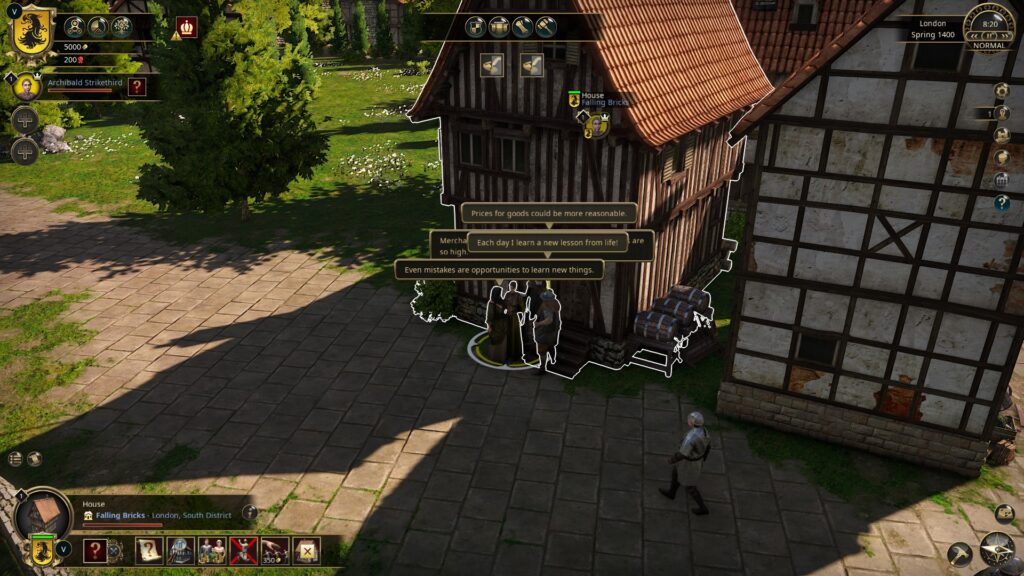
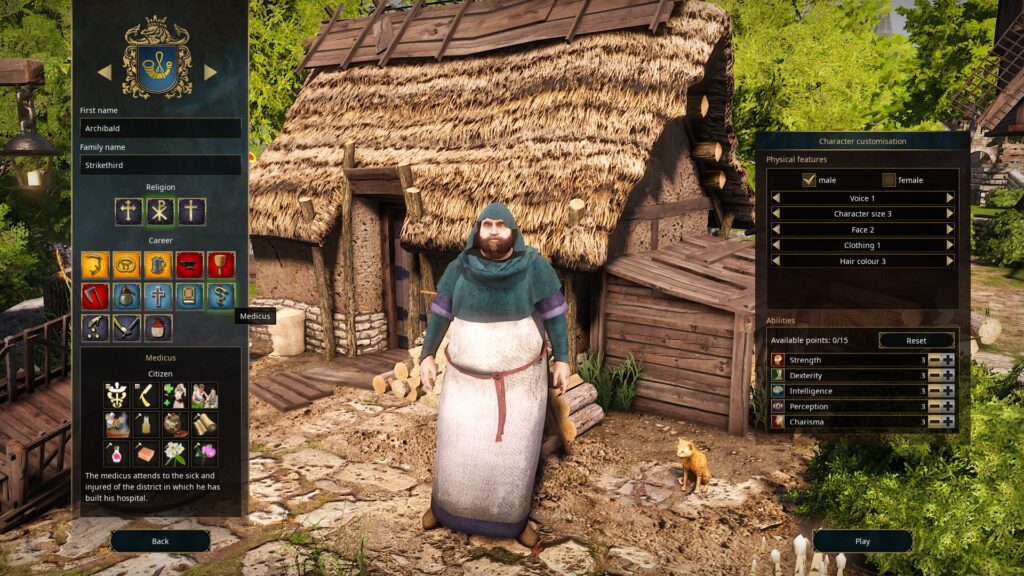
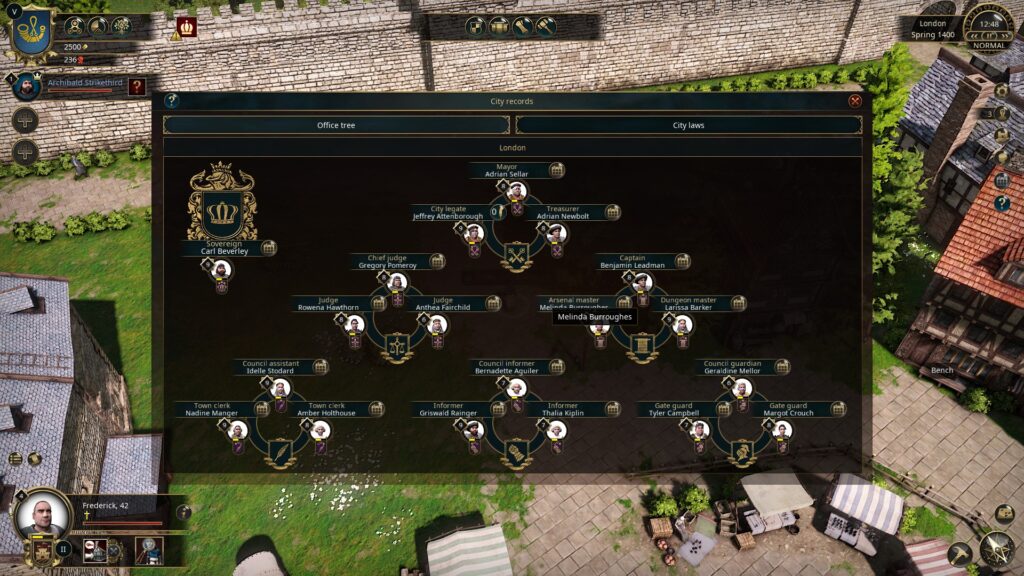
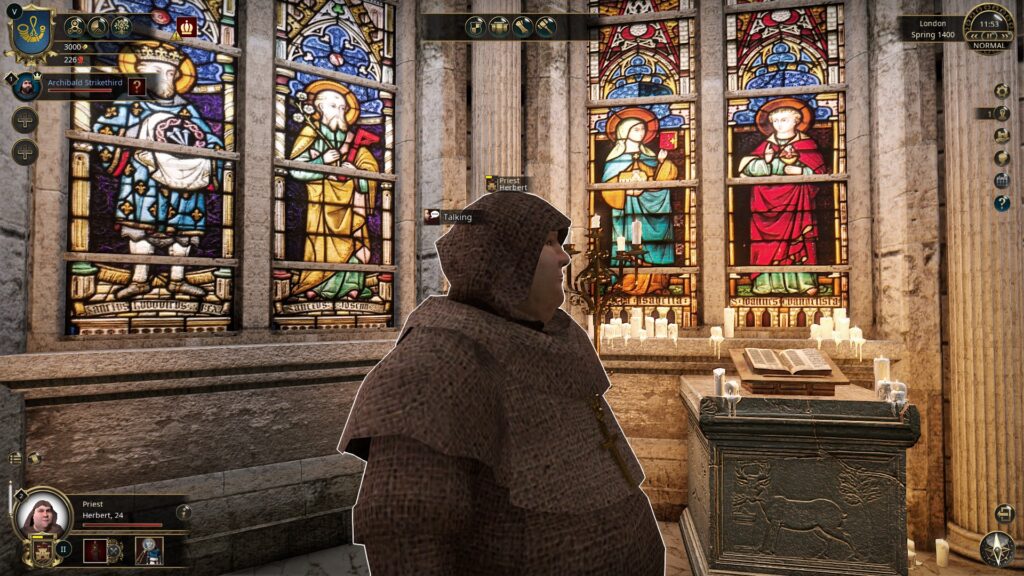
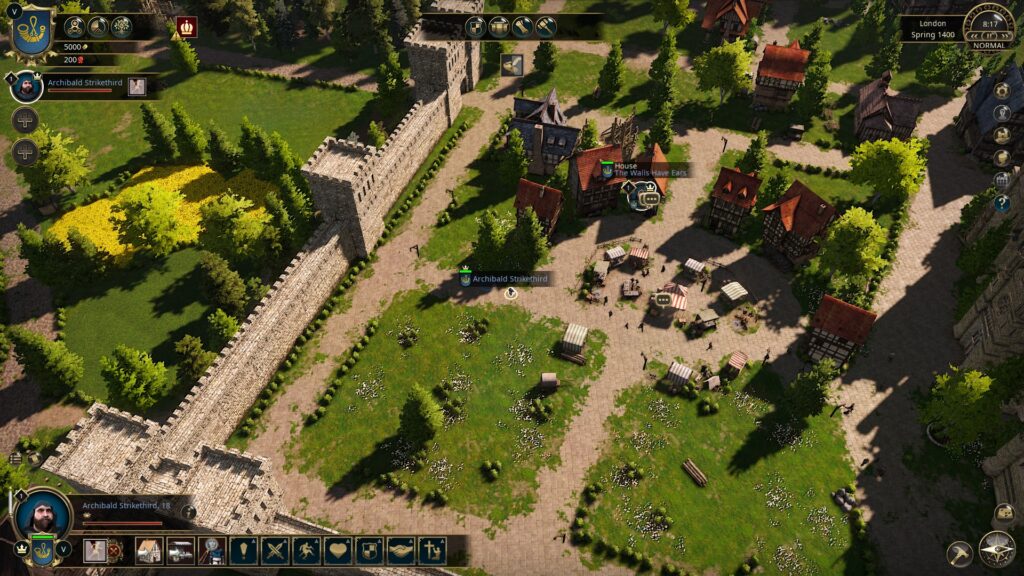




[…] reviewed The Guild 3 a year ago when it just came out. This medieval simulation game somehow straddles the line between […]